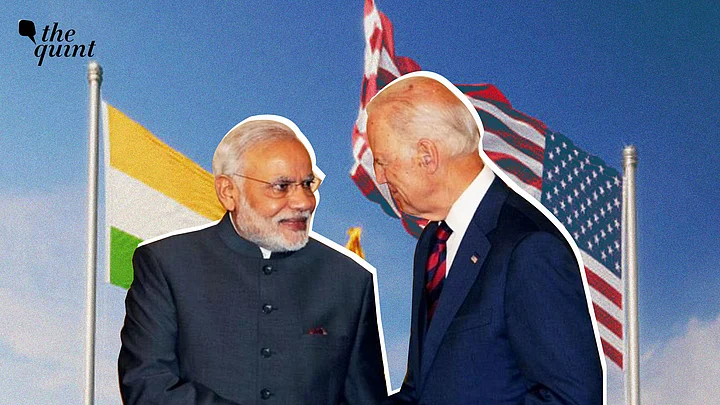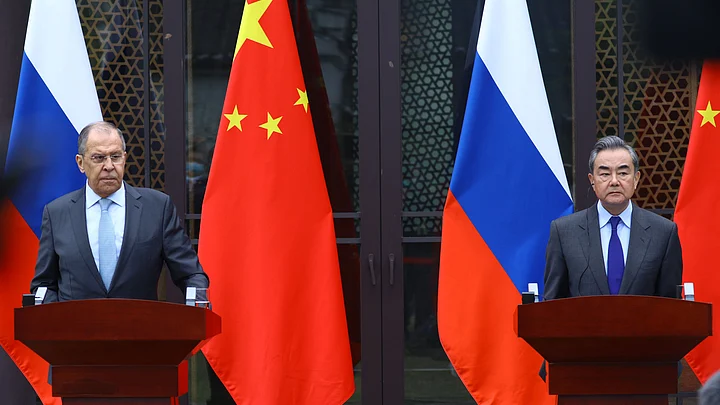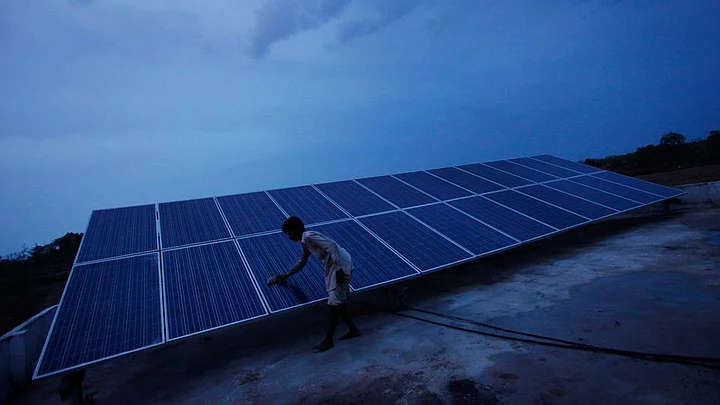All eyes during the US visit of Prime Minister Narendra Modi will be on his first-ever meeting with President Joe Biden after the latter took oath in January. Truth to tell, there is not a lot of room for manoeuvre in talks at this level, with much of the groundwork done months ago by bureaucrats on both sides. But there is some, and it is this space that everyone looks at for that critical ‘deliverable’; in simple terms, something each can sell to voters, and also power up their ‘strategic’ strength. At a time of huge shifts in global positioning, it’s no easy task.
The Afghan Stabilisation Card
In the Prime Minister’s hands are some rather vital strategic cards and some rather weak ones. In this card game, some will have to be used to the full, and some discarded without fanfare.
A hasty US exit doesn’t mean that its intelligence agencies are likely to turn their backs on the threat from Afghanistan. That’s why India can expect a US-Pakistan relationship to continue, with the US remaining its highest aid provider. But Pakistan hasn’t been able to stabilise Afghanistan for 40 years, and it's not going to be able to start now. China has ‘committed’ to just $15 million in aid, and it's worth noting that Beijing has been niggardly even with ‘Iron brother’ when it comes to freebies.
With Indian aid footprint in all 34 provinces, and more to follow if the Taliban behave, there is scope for Delhi to put its generosity to good effect. It’s a card, that Russia, the US and China, and Pakistan in particular, are waiting to see if India will use. The first three oddly have the same objectives as India, in preventing terrorism and its blood brother narcotics from flowing out. With ₹21,000-crore worth of Afghan heroin seized recently in Mundra, it's sooner the better that this card is played.
The ‘Continental’ China threat
In the second category is the fact that China is now of number one ‘interest’ to the US, which was conveyed by the White House just after Washington carried out its ignominious exit from Afghanistan.
India, the only country at present up in arms quite literally against China, and face to face with it on the ground, seems like an ideal ally for the US.
Potentially, it could even provide air space for any flights out into China, should the need arise. Don’t forget that Dinjan in Assam was the base to fly out supplies to China in an operation that in flying over the Himalayas was called “flying over the hump”. That incidentally led to the eventual setting up of the US Transport Command. With airpower capabilities vastly increased, it’s possible to fly out entirely different loads, including reconnaissance, and be a peg for any power that aspires to ‘encircle’ China.
Not that India has shown any interest in providing such a land-based route — quite the opposite. With the reality of Chinese troops sitting opposite almost the entire border, and the hasty US exit from Afghanistan, the policy of keeping Washington at a distance in the Ladakh conflict seems sensible. So, the ‘continental’ card has little meaning at this time. But it could. And Beijing knows it.
Quad & the Indo-Pacific
The second card has a little more heft. India’s participation in the Quad has been enthusiastic in terms of the exercises, even if it hangs back in specifically naming the threat. The structure of '2+2’ has been extended to all partners, making it an unacknowledged framework for cooperation. Delhi has been careful to ensure that every joint statement, including the most recent one with Australia’s Marisa Payne, includes not only the word ‘inclusive’ in describing the Indo-Pacific, but also that each centres around ASEAN, and that each also includes references to cooperation on COVID-19, climate change, etc.
Even in terms of military exercises, Delhi chooses to include non-Quad members such as France, as in the recent naval exercise ‘Le Perouse’ that also drew in the US, Japan and Australia. India has also been pressing for Russia to be part of the ‘Indo-Pacific’.
But in recent days, India has shown a decisive shift in emphasis. In a speech at the Australian National University, Foreign Minister S. Jaishankar chose to put the Indo-Pacific at the centre stage and the Quad as its pivot.
He also, however, chose to underline that India and others were forced to react to the actions of both the US and China in the area. In that sense, it was a delicate balancing act. But India is there, and on the front lines, and that counts as a definite card, never mind what happened thereafter.
AUKUS a card to discard?
Jaishankar spoke on September 9. The AUKUS (Australia -UK-US) combine was announced on September 19. Whether it changes India’s perception or not, the reality is that there is yet another hardcore security partnership in the region, including NATO and the Five Eyes partnership ( US, UK, Australia, New Zealand and Canada). That’s rather a thin white line between these countries and the ‘rest’. AUKUS clearly puts NATO in trouble as it completely cut through the French $37-billion deal for conventional submarines with Australia; it caused an outrage in Paris. While efforts have already begun to repair the damage, recall that NATO was virtually taken by surprise at the US withdrawal from Afghanistan. As the Europe-centred NATO reduces in importance, the structures in the Asia-Pacific are strengthening.
The first in-person Quad meeting, and now the AUKUS, which brings nuclear power into the Asia-Pacific in terms of submarines for Australia, is a strong signal of intent and a shock for China, which is what it was meant to be. Those submarines are unlikely to be out anytime before 2030 at best, but it’s the intent that matters. India has asked time and again for this technology and has been refused. India should not take umbrage. Delhi is not a treaty partner like the others, nor likely to be with no desire for an Asian NATO. So, that’s a card that needs to be discarded, even as Delhi could recognise that as AUKUS makes the Indo-Pacific more dangerous, it’s as well to keep on with military exercises such as those undertaken recently with the China-dominated Shanghai Cooperation Organization (SCO).
The Ambitious 'Biden Plan'
With no aces in the ‘security’ cards, there’s another left to play that could be the king if used well, in terms of possible sanctions under CAATSA (Countering America’s Adversaries through Sanctions Act), or even other areas. That is energy. The US has rapidly become the fourth-largest crude oil supplier to India, with the same ranking in natural gas. Now, there is opportunity in the renewable sector, particularly in solar energy. The U.S. installed enough solar power recently to power 18.9 million American homes. The graph is expected to grow despite supply-side constraints, which are making the whole exercise more expensive. The US is already part of the Clean Energy Agenda 2030 Partnership, which is oriented towards climate change.
The focus should be on providing the nuts and bolts of solar power in a joint partnership, with US companies asked to invest in the Indian sun even while powering the US effort. More power to both.
The Ministry of Renewable Energy has taken the first steps to streamline its photovoltaic module manufacturers. Now, work together to jump-start this and allied industries. It’s a billion-dollar industry.
Ultimately, India’s perception of the Quad and the US role can be explained through pure math. For all the talk of Chinese military power and ominous predictions, the US is still the fifth-richest country in the world in terms of per capita income, whereas China comes at 63.
On a PPP basis, the United States is in the eighth position, and China is at 76th. India lags far behind these top two, with a total GDP of $3 trillion to China’s $14 trillion and the US’s $21 trillion. Either of these two will start muscling up in Asia, and there’s not a lot Delhi can do about it. The difference is that one is sitting next door, while the other seems prone to a strategy of ‘unilateral abandonment’.
In all the cards available, it seems that the one with the most potential is trade and investment, which thereby helps to keep the ambitious Biden Plan afloat and restore 840,000 jobs lost in the energy sector. Biden needs to be given a success, which also works for India. The rest of the cards are as chancy as a poker game. Proceed, but with caution.
(Dr Tara Kartha is a Distinguished Fellow at the Institute of Peace and Conflict Studies (IPCS). She tweets at @kartha_tara. This is an opinion piece and the views expressed above are the author’s own. The Quint neither endorses nor is responsible for them.)
(At The Quint, we question everything. Play an active role in shaping our journalism by becoming a member today.)





